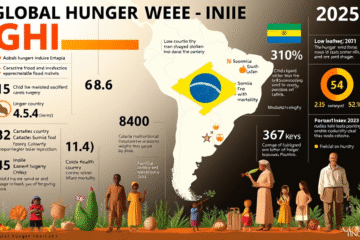AI Phytonematode Classification Model
Soybean Phytonematodes are pests that cause serious damage to soybean crops, requiring effective solutions for their management.
In this article, we will explore an innovative infestation classification model using artificial intelligence, which has an accuracy higher than 90%.
Using hyperspectral imagery and machine learning algorithms, this model not only generates thematic maps that guide pesticide application but also contributes to agricultural sustainability by reducing costs and environmental impacts.
Additionally, we will discuss the application of LiDAR technology for coffee harvest planning and the importance of developing remote sensing techniques.
Classification of Phytonematode Infestation in Soybeans with Artificial Intelligence
Classifying plant nematode infestation in soybeans using artificial intelligence has proven to be a promising innovation for the agricultural sector.
The AI model uses hyperspectral imaging, which captures detailed information about plant health, allowing it to identify patterns that indicate different levels of infestation.
Furthermore, by applying machine learning algorithms, the system is able to process this information in near real time, achieving an accuracy of over 90%, which helps farmers make more informed decisions in pest management.
Generation of Thematic Maps for Precise Application of Pesticides
Thematic maps generated from artificial intelligence models revolutionize the application of pesticides in soybean crops.
Using sophisticated algorithms, these maps identify specific areas requiring intervention, allowing for a cost reduction significant and minimizing the excessive use of chemicals.
This technological advancement, therefore, favors more sustainable agricultural practices, by optimizing the application of inputs and reducing environmental impacts.
Implementing this technology brings several benefits, such as the possibility of more precise and efficient application of agricultural pesticides.
For example, with the help of digital solutions, these technologies map infested areas, as described in BASF Agriculture.
The main benefits include:
- Less use of pesticides
- Resource optimization
- Environmental preservation
Thus, by integrating precision agriculture, farmers can not only save financial resources but also promote environmentally friendly agricultural practices.
Coffee Fruit Volume Estimation with LiDAR Technology
LiDAR technology, which stands for Light Detection and Ranging, plays a crucial role in estimating the volume of coffee berries.
This method is based on the emission of laser pulses that, when they reach the fruit, return to the sensor, allowing the acquisition of precise data on shape and size.
From these collections, a detailed three-dimensional model of the plantation is generated, essential for harvest planning.
Furthermore, the volumetric process involves advanced image processing algorithms, which analyze 3D data to accurately calculate fruit volume.
This way, farmers can predict crop yield and adjust their management strategies, optimizing the use of resources and minimizing losses.
This innovative use of technology allows coffee plantations to increase efficiency and reduce operating costs, while access to accurate harvest information transforms the way agribusiness is managed.
To learn more about using LiDAR in various crops, visit the detailed article Coffee Productivity Estimation Using LiDAR at UFV.
Remote Sensing Adapted to Various Crops and Small Farmers
O adapted remote sensing to different cultures has transformed agriculture in small producers, making it accessible the cutting-edge technology for agricultural monitoring.
Using hyperspectral imaging and advanced machine learning algorithms, it is possible to identify the presence of pests or diseases in the early stages, allowing for precise interventions.
This technology reduces operating costs and reduces environmental impact.
The application of these methodologies is simplified to facilitate integration into producers’ traditional processes.
LiDAR sensors, for example, are used to estimate harvest volumes, improving planning and resource allocation in the field.
Furthermore, the socioeconomic impact is significant, promoting democratization of access to innovations.
See the table below for some of the advantages:
| Technological Resource | Benefit to Small Producers |
|---|---|
| Hyperspectral Images | Early pest detection |
| Machine Learning | Reduction of operating costs |
| LiDAR Sensors | Improved crop planning |
Scientific Dissemination and Collaboration with the Agricultural Sector
Publishing results in specialized journals plays a crucial role in disseminating scientific knowledge generated by research in AI and remote sensing in agriculture.
This strategy not only ensures that innovative discoveries reach a broad audience of researchers and industry professionals, but also promotes accessibility of knowledge by making information available to all those interested in the area.
Collaboration is essential, as opening up to partnerships with the agricultural sector allows these innovations to be applied in practice, resulting in concrete improvements in the field.
The exchange of experiences strengthens the connection between research and application, benefiting both small farmers and the agricultural industry as a whole.
Furthermore, these publications stimulate new projects and synergies, fostering a collaborative environment that accelerates the development of sustainable and efficient solutions to the challenges faced in modern agriculture.
The innovations presented in this article show a promising path for modern agriculture, providing efficient tools for farmers.
Collaboration with the agricultural sector is essential for the adoption of these technologies, especially benefiting small producers.



0 Comments